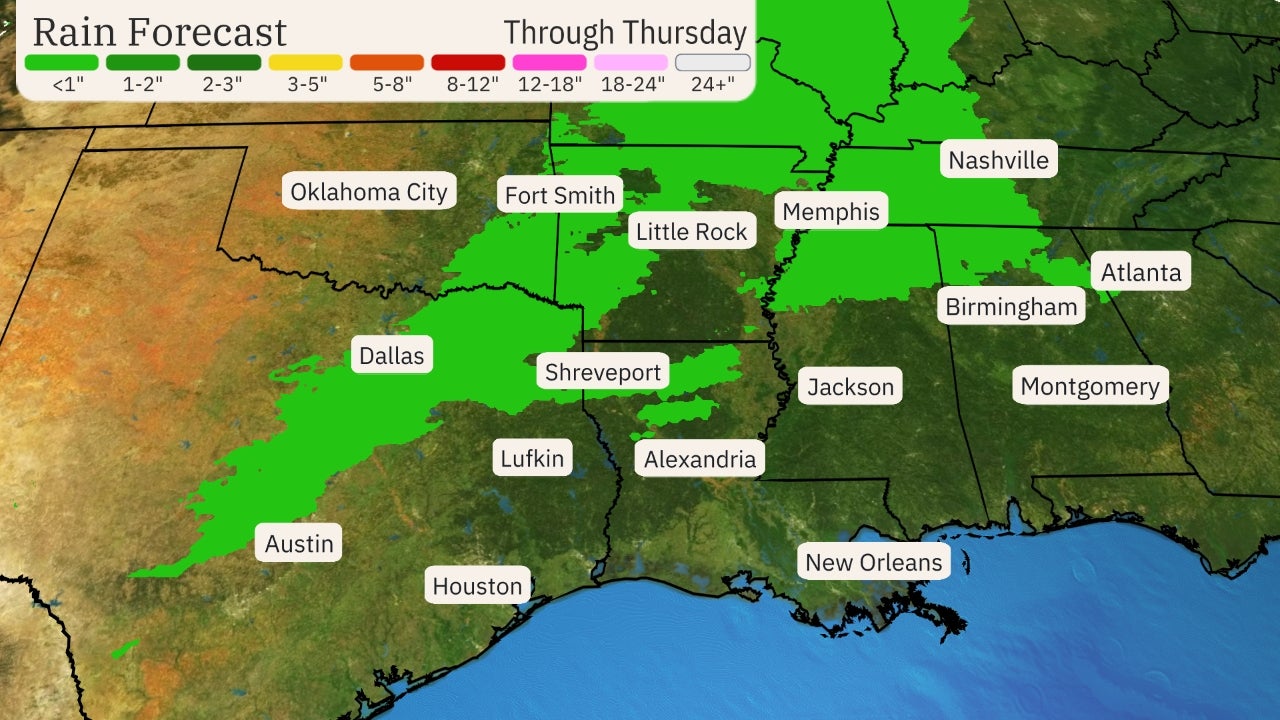Jonathan Erdman
 The latest Drought Monitor analysis, with areas of worse drought shown by progressively darker contours of tan and brown.
The latest Drought Monitor analysis, with areas of worse drought shown by progressively darker contours of tan and brown.The increasingly dire western U.S. drought is locked in through the summer, while other areas of drought in the Northern Plains, Great Lakes and East are in need of rain as well. Some relief is on the way for the East and Midwest.
Drought currently blankets just over 43% of the area of the Lower 48 states, according to the latest Drought Monitor analysis.
It has reached the highest drought category –- "exceptional" –– in parts of eight western states, from Oregon and California to western Texas. Water restrictions are growing in California and the Colorado River could face its first-ever water shortage due to paltry snowpack that feeds it and downstream reservoirs, including Nevada's Lake Mead.
Drought has also developed or worsened in three other areas of the country this spring.
Here's a closer look at these regions and the prospects for any drought relief:
Carolinas, Virginia
One of these drought areas will see significant relief.
Spring was very dry in parts of the Southeast.
Raleigh, North Carolina (5.02 inches), had its driest spring in records dating to 1887.
By June 1, parts of northeast South Carolina into eastern North Carolina and into Virginia had slipped into drought.
On-and-off soaking rain is expected to continue in this area through Friday.
Parts of the eastern Carolinas and southeast Virginia could pick up more than an inch of rain. Raleigh measured 3.86 inches of rain between Wednesday and Thursday. The last time Raleigh picked up an inch of rain in any two-day period was over two months ago (March 27-28).
 Rainfall Forecast and Drought Status
Rainfall Forecast and Drought StatusNorthern Plains
The Dakotas, eastern Montana and Wyoming have been in some degree of drought since last summer. But this region's drought worsened and spread through winter and ramped up during a dry spring.
Exceptional drought is now in place over part of North Dakota. It's the state's most widespread and intense drought this century.
 Area coverage (in percent) of each drought category in North Dakota from 2000 through May 25, 2021, indicated by the red arrow.
Area coverage (in percent) of each drought category in North Dakota from 2000 through May 25, 2021, indicated by the red arrow.Minot, North Dakota, picked up only 0.53 inch of precipitation from March through May, its record driest spring.
According to the May 25 Drought Monitor summary, "very little vegetative matter is available for grazing" in this drought zone. Recent soaking rain before Memorial Day weekend either soaked into the parched ground without recharging ponds or rivers or came down so rapidly it couldn't soak into the rock-hard, dry ground, according to the summary.
There isn't much good news in the immediate future for the Northern Plains.
Some scattered thunderstorms are possible in parts of the Northern Plains, mainly North Dakota, into this weekend.
Otherwise, a heat wave will set record early-June highs through Saturday, and generally hotter-than-average temperatures are expected to linger into next week.
Great Lakes
A dry spring has also lead to the development of drought in parts of the Great Lakes and upper Midwest.
It was Chicago's driest spring since the Great Depression (3.75 inches of precipitation), third driest on record. Grand Rapids, Michigan, and Milwaukee, Wisconsin, each also had a top 10 driest spring in their history, according to the Southeast Regional Climate Center.
Some groundwater observation stations in far northeast Illinois reported record low values for late May, the National Weather Service office in Romeoville, Illinois, wrote in a May 21 statement.
In the near term, a heat wave will bake the Great Lakes without any significant rain through the weekend.
However, a wetter pattern may bring some drought relief next week.
(MAPS: 7-Day U.S. Forecast Rainfall)

The Weather Company’s primary journalistic mission is to report on breaking weather news, the environment and the importance of science to our lives. This story does not necessarily represent the position of our parent company, IBM.
The Weather Company’s primary journalistic mission is to report on breaking weather news, the environment and the importance of science to our lives. This story does not necessarily represent the position of our parent company, IBM.

No comments:
Post a Comment